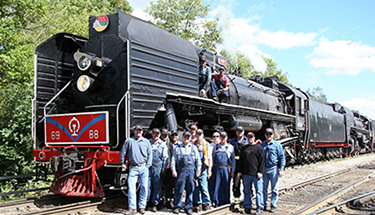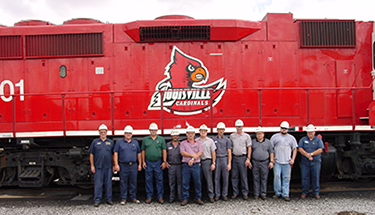October 2023 - ASLRRA Files Comments in PHMSA NPRM Requiring Train Consist Information
September 2023 - ASLRRA and NRC File Joint Comments Responding to FRA's NPRM on Certification of Signal Employees
September 2023 - ASLRRA Files Comments Responding to FRA's NPRM on Certification of Dispatchers
June 2022 - ASLRRA Provides Written Testimony for U.S. House T & I Hearing – Examining Rail Safety ASLRRA advocates for the industry on Capitol Hill urging Congress and regulating bodies to advance safety rules and regulations with known safety benefits and to foster – not hinder – technology and operational practices that improve rail safety.
August 2021 - ASLRRA responds to the FRA's August 23, 2021 information request on Part 219
ASLRRA states that the paperwork requirement for locomotive safety standards is capricious and burdensome.
February 2022 - ASLRRA Submits Comments and Testimony to STB for EP 711 (Forced Switching) Hearing March 15 and 16. ASLRRA discusses the negative impact of forced switching on the industry.
February 2022 - ASLRRA Files Comments in Response to the Surface Transportation Board Request Regarding First-mile/last-mile Service (Ex parte 767) ASLRRA responds to the Board describing the difficulty of providing a single metric for measurement across 600 short lines, and the error of including short lines in a Class I-focused issue.
December 2021 - ASLRRA files comments on the Surface Transportation Board's Docket EP 767
ASLRRA cautions against requiring short line railroads to bear the burden of creating a metric and tracking system across 600 unique entities.
As any new regulations are considered for what is already a highly regulated industry, we urge that they be focused on solving actual safety problems and be practical for small business short line railroads to implement. Further, we encourage Congress to be aware of unintended consequences to broader transportation safety— when regulations increase the cost of freight railroading or degrade freight rail service, they risk shifting freight traffic from the largely privately funded and safer rail network to the largely publicly funded and less safe highway network. Short lines can only thrive if our mostly small business entrepreneurs are given the flexibility and discretion to run their railroads in a manner that is safe, customer-focused, and still cost-effective.

Continue to fund Operation Lifesaver (OLI), Section 130, and the Rail Crossing Elimination (RCE) program to protect the public. By far the most significant concerns with rail safety are related to interactions with the public at grade crossing accidents and trespasser issues.
Operation Lifesaver is an industry and government-supported effort which focuses on educating the public both about the importance of staying off railroad tracks and the need for passenger and commercial vehicle drivers to exercise caution at grade crossings. The federal government has been an important participant in these efforts, largely through the FHWA Railway-Highway Crossings Program, known widely as the “Section 130” program.
This program significantly improves grade crossing safety by providing funding to improve grade crossing protection equipment. More recently, the Rail Crossing Elimination program has also been successful in providing options for communities to close unnecessary crossings. We recommend that Congress continues to fund the Section 130 program, RCE, and OLI at robust and guaranteed levels.
ASLRRA asks Congress to authorize federal support for the Short Line Safety Institute (SLSI), which helps build a strong, sustainable safety culture throughout the short line industry. Beginning in 2015, with a modest $2 million grant from the FRA recommended by Congress, the SLSI has developed a program of safety culture assessments, training, and education, including a focus on the safe transportation of energy products and hazardous materials, outreach activities, and research. SLSI has become a trusted entity within the industry and at FRA, providing safety culture assessments that have been identified as the most robust in the industry with suggestions for improvement based on industry best-practices.
SLSI has been funded by report language in the annual appropriations process, directing on average $2.5m annually from the FRA’s Research and Development account to fund SLSI’s operations. We encourage Congress to create a line-item authorization for SLSI to ensure consistent funding of this popular and effective program. This type of authorization would enable direct funding in statute.
The SLSI serves as a powerful example of the results that public-private partnerships can achieve. Improving safety culture on short line railroads leads to increased safety in the communities we serve.

Regulations should deliver clear safety benefits. When crafting regulations, it is imperative that agencies use deftness and precision to avoid instituting unnecessary, disproportionately burdensome compliance measures for small businesses such as short line railroads.